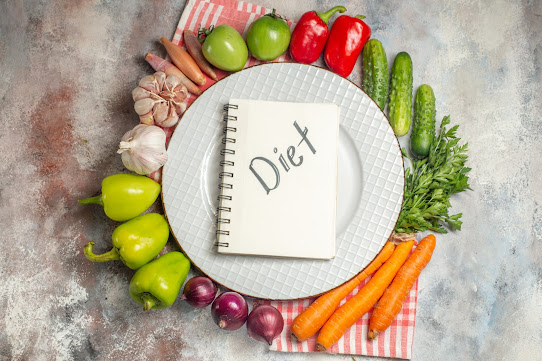Revitalize and Thrive: Embracing a Healthy Diet and Lifestyle for Lasting Well-Being
Introduction:
In today's fast-paced world, maintaining a healthy diet and lifestyle has become more critical than ever. With the rise of chronic diseases and the impact of stress on our well-being, it is crucial to prioritize our health.
Adopting a healthy way of life and eating, we can revitalize our bodies and minds, and thrive in all aspects of life. This article aims to provide insights and guidance on adopting a nutritious diet and cultivating positive lifestyle habits for lasting well-being.
1. The Power of Nutrition
Nutrition forms the foundation of a healthy lifestyle. By fueling our bodies with the right nutrients, we can boost our energy levels, enhance our immune system, and prevent various diseases. Here are the key elements of a healthy diet:
1.1. Balanced Diet:
Whole grains, lean proteins, a variety of fruits and vegetables, and healthy fats make up a balanced diet. This combination provides essential vitamins, minerals, and antioxidants needed for optimal health.
1.2. Portion Control:
Portion control is crucial to avoid overeating and maintain a healthy weight. Being mindful of serving sizes helps prevent excessive calorie intake and promotes better digestion.
1.3. Hydration:
Staying hydrated is often overlooked but is vital for overall well-being. Drinking adequate water helps regulate body temperature, supports digestion, and flushes out toxins.
1.4. Reducing Processed Foods:
Processed foods often contain unhealthy fats, added sugars, and sodium. Limiting their consumption and opting for whole, unprocessed foods contributes to better nutrition and reduces the risk of chronic diseases.
2: Cultivating a Healthy Lifestyle
In addition to a nutritious diet, adopting a healthy lifestyle enhances well-being on multiple levels. Here are key lifestyle factors to consider:
2.1. Regular Exercise:
Engaging in regular physical activity not only helps maintain a healthy weight but also improves cardiovascular health, strengthens muscles and bones, and boosts mood.
Finding activities you enjoy, such as walking, jogging, yoga, or dancing, will make exercise a sustainable habit.
2.2. Sufficient Sleep:
Adequate sleep is essential for our bodies to recharge and repair. Lack of bedded can advance to decreased cerebral function, an attenuated allowed system, and an added accident of abiding conditions. Aim for 7-9 hours of quality sleep each night.
2.3. Stress Management:
Chronic stress can have a detrimental impact on our health. Finding effective stress management techniques, such as meditation, deep breathing exercises, or engaging in hobbies, helps reduce stress levels and promotes mental well-being.
2.4. Social Connections:
Maintaining meaningful relationships and a strong support system is vital for our overall happiness. Cultivate and nurture your social connections, as they contribute to a sense of belonging and emotional well-being.
3: Sustainable Changes for Lasting Well-Being
3.1. Set Realistic Goals:
When embarking on a journey towards a healthier lifestyle, setting realistic goals is crucial. Break your goals into manageable steps and celebrate your achievements along the way. This approach ensures sustainable changes rather than quick fixes.
3.2. Practice Mindful Eating:
Mindful eating involves paying attention to your body's hunger and fullness cues, as well as savoring each bite. By slowing down and being present during meals, you can foster a healthier relationship with food and avoid mindless overeating.
3.3. Seek Professional Guidance:
If you're unsure about how to start or have specific health concerns, it's beneficial to consult with a healthcare professional or a registered dietitian. They can provide personalized guidance and create a tailored plan that suits your unique needs and goals.
3.4. Embrace a Positive Mindset:
A positive mindset plays a significant role in adopting a healthy diet and lifestyle. Believe in your ability to make positive changes and approach challenges with optimism. Surround yourself with positive influences and practice self-care to maintain a balanced perspective.
3.5. Practice Self-Compassion:
Remember that adopting a healthy diet and lifestyle is a journey, and it's important to be kind to yourself along the way. Acknowledge that there will be ups and downs, and treat yourself with compassion and understanding. Celebrate progress rather than striving for perfection.
4: The Benefits of Embracing a Healthy Diet and Lifestyle
4.1. Enhanced Energy and Vitality:
By nourishing your body with nutritious foods and engaging in regular physical activity, you will experience increased energy levels and improved vitality. This will enable you to approach daily tasks with greater enthusiasm and productivity.
4.2. Improved Physical Health:
Chronic diseases like diabetes, heart disease, and some types of cancer are significantly less likely to occur in people who lead healthy lifestyles and eat well. Additionally, they help to maintain a healthy weight, strengthening the immune system, and promoting overall physical well-being.
4.3. Mental and Emotional Well-Being:
The connection between a healthy diet and mental health is well-established. Nutrient-rich foods support brain function and can improve mood and cognitive performance. Additionally, engaging in physical activity and practicing stress management techniques can reduce anxiety and depression, leading to better mental and emotional well-being.
4.4. Longevity and Quality of Life:
A balanced diet and a healthy lifestyle are closely linked to longevity and a higher quality of life. You can increase your chances of having a fulfilling and active life in old age by taking care of your body and mind.
Conclusion:
Revitalizing and thriving through a healthy diet and lifestyle is within everyone's reach. By prioritizing nutrition, engaging in regular physical activity, managing stress, and fostering positive relationships, we can achieve lasting well-being. Remember that small, sustainable changes are the key to long-term success. Embrace the journey and enjoy the numerous benefits that await you on the path to a healthier and happier life.
You can transform your life and experience the incredible power of adopting a healthy diet and lifestyle with the right information, motivation, and support. Start today and take the first steps towards revitalizing your body and thriving in every aspect of your life. Your well-being is worth the effort, and the rewards will be truly remarkable.



























.jpg)














